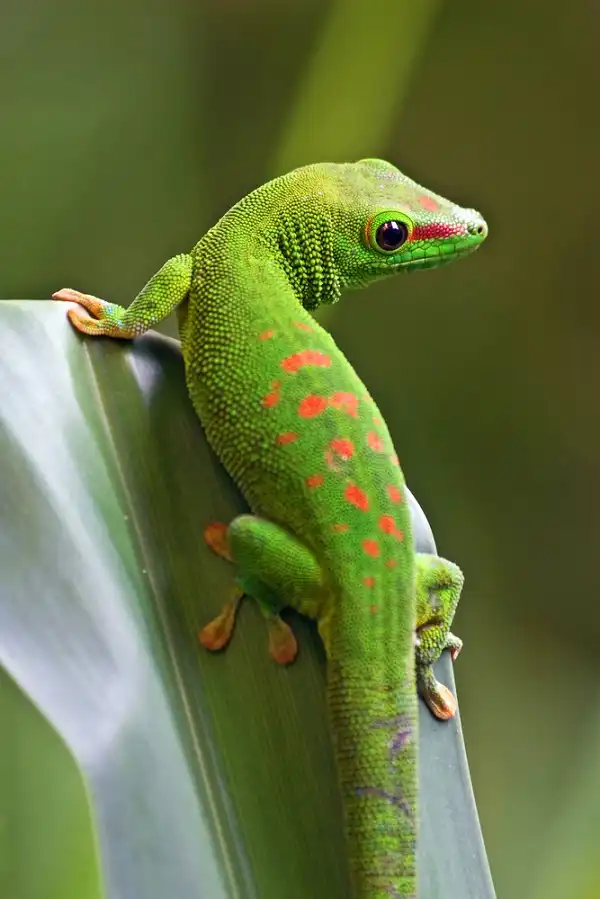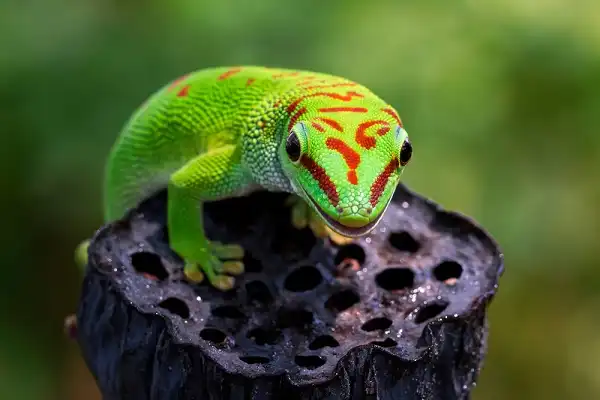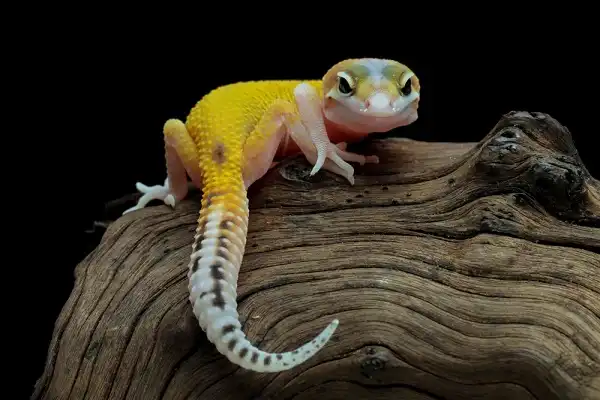Geckos are lizards belonging to the infra order Gekkota, found in warm climates throughout the world. Geckos are unique among lizards for their ability to climb smooth surfaces and even walk across ceilings. Some species of gecko can also change color to blend in with their surroundings. Although they are not typically considered pests, some species of geckos can be a nuisance to homeowners by entering houses and congregating on walls and ceilings.

Gecko Description
Geckos come in a variety of shapes, sizes, and colors. Most species have distinctive toes that are covered with tiny setae (hairs) which enable them to cling to vertical surfaces and even walk on ceilings. They usually range in size from 2 – 4 inches (5-10 cm) long, although some species can grow up to 8 inches (20 cm). Geckos are typically found in various shades of browns, greens, yellows, and grays, but some species have vibrant red or blue markings.
Gecko Habitat
Geckos can be found in a wide range of habitats, including deserts, forests, and even suburban neighborhoods. They are most often seen near human dwellings, where they take advantage of the warmth and protection offered by buildings. In their natural environment, geckos inhabit cracks in rocks or trees and other areas that provide shelter from predators.
Gecko Diet
Gecko feed primarily on insects such as moths, flies, and crickets. They also eat small lizards, snakes, and amphibians. In captivity, geckos can be fed commercially prepared foods like mealworms and crickets.
Gecko Size
Gecko range in size from 2 – 4 inches (5-10 cm) long, although some species can grow up to 8 inches (20 cm).

Gecko Lifespan
The average lifespan of a gecko is around 5-10 years, although some species can live up to 20 years.
Gecko Behavior
Most species of gecko are nocturnal creatures which means they are active at night when it is cooler outside. During the day they hide in dark, moist places such as crevices or under rocks. Geckos are also solitary creatures that usually live alone. They communicate with one another by making chirping and clicking sounds.
Gecko Speed
Geckos can move quickly and can even run up to 20 miles per hour (32 km/h). They are also adept climbers, able to climb walls, ceilings, and other vertical surfaces.

Gecko Hunting
Geckos have excellent eyesight and use their long tongues to catch insects. They wait for their prey to come close and then strike quickly with their tongues. Geckos also use camouflage to blend into their surroundings and ambush unsuspecting prey.
Gecko Reproduction
Most species of gecko reproduce by laying eggs rather than giving birth to live young. Females can lay anywhere from 2-20 eggs depending on the species. The eggs take around 6-8 weeks to hatch and the young lizards reach adulthood in 1-2 years.

Conclusion
Geckos are small lizards found in warm climates throughout the world. They have unique abilities to cling to surfaces and change color to blend into their surroundings. Geckos feed mainly on insects and live up to 10 years in the wild. They are nocturnal creatures and use camouflage when hunting prey. They lay eggs which take around 6-8 weeks to hatch. Geckos make interesting pets due to their hardiness, ease of care, and fascinating behavior.
Frequently Asked Question

